Exploring the Relationship Between Group Theory and Geometry
There is a very deep link between group theory and geometry. Sadly, this link is not emphasized a lot in most courses of group theory, even though it is not so difficult.
The link between groups and geometry was detailed by Klein in his Erlangen program. It is the goal of this insight to give the basic ideas of this program.
So let us begin simple with 2-dimensional Euclidean geometry. This kind of geometry everybody learns in high school, but not everybody learns that there are in fact multiple geometries involved here. What multiple geometries? Well, the idea is that a geometry is determined by how it defines similarity of geometric objects.
Let us clarify with the usual notion of a triangle. We have several notions of how two different triangles are “the same”. Indeed, we can say that two triangles are congruent. Two triangles are intuitively congruent if we can cut out one of the triangles out of a piece of paper and put it perfectly on the other triangle. Two triangles are congruent if all the angles have equal size and if all the sides have equal length. But we also have similarity of triangles. Two triangles are similar if they have the same shape, but perhaps not the same size. Two triangles are similar if all the angles have equal size, but the lengths of the sides might not be the same (they are proportional though).
So in a geometry, it is important to give a relation between its subsets. This relation tells us whether two “geometric figures” are “the same”. The idea is to associate transformations with this relation. We have already done this with the triangle: two triangles are congruent if we can “move” one of the triangles to perfectly cover the other. Formally, this is a transformation ##T:\mathbb{R}^2\rightarrow \mathbb{R}^2##. This transformation can be a reflection, a rotation, a translation or any combination of these. In the case of similarity, we also allow the map ##T## to shrink/expand the space.
Let’s do this a bit more formally. We are given a geometry ##X##. This means that ##X## is a set together with some allowable transformations of ##X##. We call a subset ##A## of ##X## to be isomorphic to a subset ##B## if there is an allowable transformation ##T## such that ##T(A) = B##. What kind of transformations should we allow? The choice is essentially ours of course, but we need the following:
- A set ##A## must be isomorphic to itself. This is easily achieved if the identity ##T:X\rightarrow X## is in our set of transformations.
- If a set ##A## is isomorphic to ##B## then it must be true that ##B## is congruent to ##A##. In order to achieve this, we want to be able to undo the transformations. Formally, we want the allowable transformations to be invertible and we want that the inverse of an allowable transformation to be allowed.
- If a set ##A## is isomorphic to ##B## and if ##B## is isomorphic to ##C##, then we of course want ##A## to be isomorphic to ##C##. This is easily achieved by allowing that the composition of two allowable transformations is allowable.
So we see that the transformations on ##X## must be a group. So a geometry can be defined as a set ##X## together with a group of transformations ##X\rightarrow X##. Often we will demand the group to act transitively on ##X##, this means that for any two ##x,y\in X##, there is some transformation ##T## such that ##T(x) = y##.
So let us take a look at the usual geometries:
- We have Euclidean geometry. The set here is ##\mathbb{R}^2## and we equip it with the group of Euclidean motions. This group is exactly the group of distance preserving functions. That is, bijections ##T:\mathbb{R}^2\rightarrow \mathbb{R}^2## such that the distance between ##\mathbf{x}## and ##\mathbf{y}## equals the distance between ##T(\mathbf{x})## and ##T(\mathbf{y})##. The awesome Mazur-Ulam theorem implies directly that these bijections are linear. It is then easy to show that the function is of the form ##T(\mathbf{x}) = A\mathbf{x}+\mathbf{b}##, with ##A\in O(2,\mathbb{R})##. In group theoretic terms, the group of Euclidean motions is the semi-direct product of the group ##O(2,\mathbb{R})## and the group of translations ##\mathbb{R}^2##.
- We have similarity geometry where we also allow shrinking and expanding maps. We can show that our transformations are then of the form ##T(\mathbf{x}) = \alpha A\mathbf{x} + \mathbf{b}## with ##A \in O(2,\mathbb{R})## and ##\alpha\neq 0##. Similarity geometry can be described completely with complex numbers: the underlying set is ##\mathbb{C}## and the transformations are of the form ##T(z) = az + b## with ##a,b\in \mathbb{C}##. This is the main motivation of why complex numbers are important!
- We also have affine geometry. The transformations here are defined as those bijections which send straight lines to straight lines. It can easily be shown that parallellism is also preserved under those transformations. More deeply, the beautiful fundamental theorem of affine geometry implies that those bijections are all linear. It is then easily seen that the allowable transformations are of the form ##T(\mathbf{x}) = A\mathbf{x} + \mathbf{b}## with ##A\in GL(n,\mathbb{R})##.
- Also hyperbolic and spherical geometry can be described completely in terms of groups. Relevant then are the so-called Mobius transformations.
- Finite symmetry groups of things like cubes and pyramids can also be described in this scheme. Let’s take a cube ##C##, we define a symmetry of this cube to be a bijection between the vertices of the cube such that two connected vertices remain connected after the transformation. The group in question is ##S_4\times \mathbb{Z}_2## and has ##48## elements.
Thus we have three geometries on ##\mathbb{R}^2##: Euclidean, similarity and affine geometries. Those geometries have their own invariants, which is certain information that is not changed by the allowed transformations. In Euclidean geometry, there are many invariants: length, angles, perpendicular, etc. In similarity geometry, we lose length as an invariant, but the angle of two lines is still a valid invariant. In affine geometry, we lose angles, but we do retain some basic invariants such as parallel lines, and ratios of length. We can go on and equip ##\mathbb{R}^2## with the very general group of homeomorphisms. This geometry is known as topology. There are very few invariants here, but the dimension of a figure is still a well-defined geometry. Topology is sometimes known as the largest interesting geometry.
We can go further though and we can do geometry only by specifying the group and not the underlying set. The idea is that of group quotients. Usually, when we have a group ##G##, then we take a normal subgroup ##H## and form the quotient group ##G/H##. If the group ##H## is not a normal subgroup, then the quotient ##X = G/H = \{aH~\vert~a\in H\}## still makes sense but won’t be a group under the usual operations. We can however associate now with any group element ##g\in G## a transformation ##T_g:X\rightarrow X: aH\rightarrow gaH.## So given a group ##G## and any subgroup ##H##, we can find a geometry ##X = G/H## and we even have that ##G## acts transitively on ##X##. What is the role of ##H##? Well, ##H## is the isotropy group of an element: it is the group of those elements that fix a given element ##p##.
We can turn this around: given any geometry ##X## with group ##G## that acts transitively, we can fix an element ##p## and take ##H = \{T\in G~\vert~T(p) = p\}##. Then ##X## is naturally isomorphic to ##G/H##. So we see that our entire geometric information is encoded exactly in a pair ##(G,H)##. So we can abstractly define a geometry to be a pair ##(G,H)## with ##G## a group and ##H## a subgroup of ##G##.
In the case of Euclidean geometry, our group in question is that of the 2-dimensional motions ##E(2)## and the group ##H## is exactly ##O(2)##. We have ##\mathbb{R}^2 \sim E(2)/O(2)##. All other geometries we described here follow this same theme. For example, a triangle is a geometry on three points described as ##(S_3, \mathbb{Z}_2)##.
We can go on now and describe relations between geometries. Or we can allow our geometries to be curved to obtain Cartan-Cayley-Klein geometries.
Advanced education and experience with mathematics

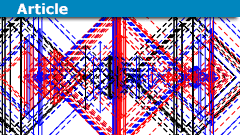
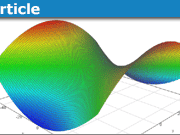
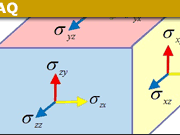

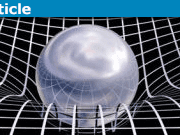
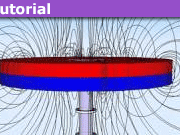
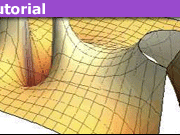
Great contribution!
[QUOTE="micromass, post: 5510507, member: 205308"]But Klein had a very general method of generating geometries. Basically, he took projective space and he equipped it with a special "distance functions". Then a lot of very pathological but also natural geometries pop up. For example, of course euclidean, hyperbolic and elliptic geometry shows up this way. But also Minkowski geometry and Galilean geometry shows up in this way outlined by Klein. In this way, Klein discovered Minkowski geometry far before SR and GR, but he probably dismissed it for being not useful.[/QUOTE]Klein built upon the idea of Cayley—hence the name Cayley-Klein Geometries ( https://en.wikipedia.org/wiki/Cayley–Klein_metric ), as mentioned at the end of the Insight.These "distance functions" are related to the https://en.wikipedia.org/wiki/Laguerre_formula .It might be worth noting that deSitter and anti-deSitter (spacetimes of nonzero constant curvature) and their non-relativistic limits are also in this classification of geometries.
[QUOTE]There is a very deep link between group theory and geometry. [/QUOTE]Generalizing the line of thinking in the Insight, can we say that there is a very deep link between group theory and equivalence classes (of any sort) ? Another interesting (and probably subjective) question is "What characterizes a mathematical structure that has 'geometry'"? ( For example, at face value, elementary plane geometry has many topics besides congruence and similarity. )
Nice! One more example for the last section, a very important one, the upper half plane is ##SL_2(mathbb R)/SO_2(mathbb R)##.
[QUOTE="strangerep, post: 5510488, member: 70760"]The relationship becomes even more fascinating in elementary particle theory. I.e., the insight that the state spaces of elementary (quantum) particles can be constructed by finding representations of a particular group. Also advanced classical mechanics where symmetry groups for the dynamics, and associated structure of the symplectic phase space take center stage. The notion that Minkowski spacetime is "really" just a homogeneous space for the Poincare group is also intriguing.One might even say that these relationships are now intrinsic to most (if not all) of modern theoretical physics (after one has generalized the concept of "geometry" to "representations"). :oldbiggrin:BTW, what about semigroups? Is there a well developed theory of (some alternate version of) homogeneous spaces when one is dealing with a semigroup in which some elements have no inverses? The obvious example is the heat equation for which only forward time evolution is sensible.[Edit: Is "Erlanger" a typo? I thought it was "Erlangen".][/QUOTE]Yes, it is Erlangen. I'll fix it.The point you bring up is very interesting, but I didn't want to go so far. But Klein had a very general method of generating geometries. Basically, he took projective space and he equipped it with a special "distance functions". Then a lot of very pathological but also natural geometries pop up. For example, of course euclidean, hyperbolic and elliptic geometry shows up this way. But also Minkowski geometry and Galilean geometry shows up in this way outlined by Klein. In this way, Klein discovered Minkowski geometry far before SR and GR, but he probably dismissed it for being not useful.
The relationship becomes even more fascinating in elementary particle theory. I.e., the insight that the state spaces of elementary (quantum) particles can be constructed by finding representations of a particular group. Also advanced classical mechanics where symmetry groups for the dynamics, and associated structure of the symplectic phase space take center stage. The notion that Minkowski spacetime is "really" just a homogeneous space for the Poincare group is also intriguing.One might even say that these relationships are now intrinsic to most (if not all) of modern theoretical physics (after one has generalized the concept of "geometry" to "representations"). :oldbiggrin:BTW, what about semigroups? Is there a well developed theory of (some alternate version of) homogeneous spaces when one is dealing with a semigroup in which some elements have no inverses? The obvious example is the heat equation for which only forward time evolution is sensible.[Edit: Is "Erlanger" a typo? I thought it was "Erlangen".]
Very interesting article, thank you. I admit to belong to those who never walked upon that general bridge. Only occasionally on some walkways. I definitely will have a complete different view on geometries now.